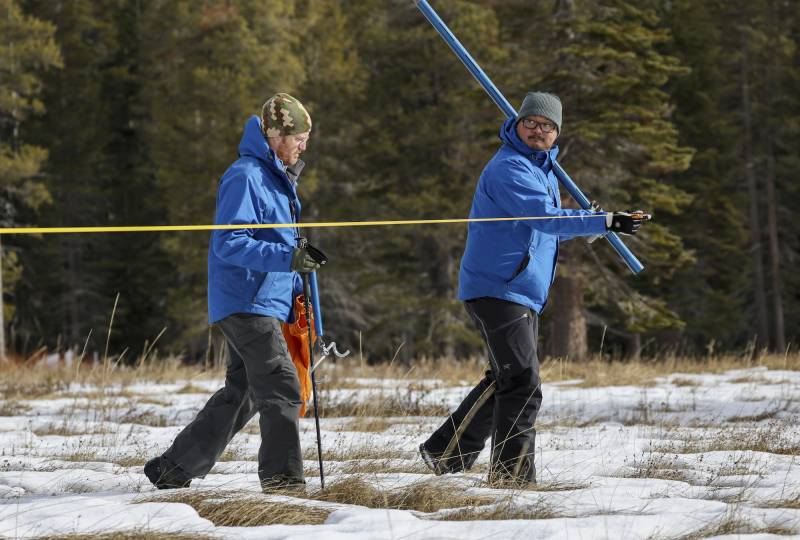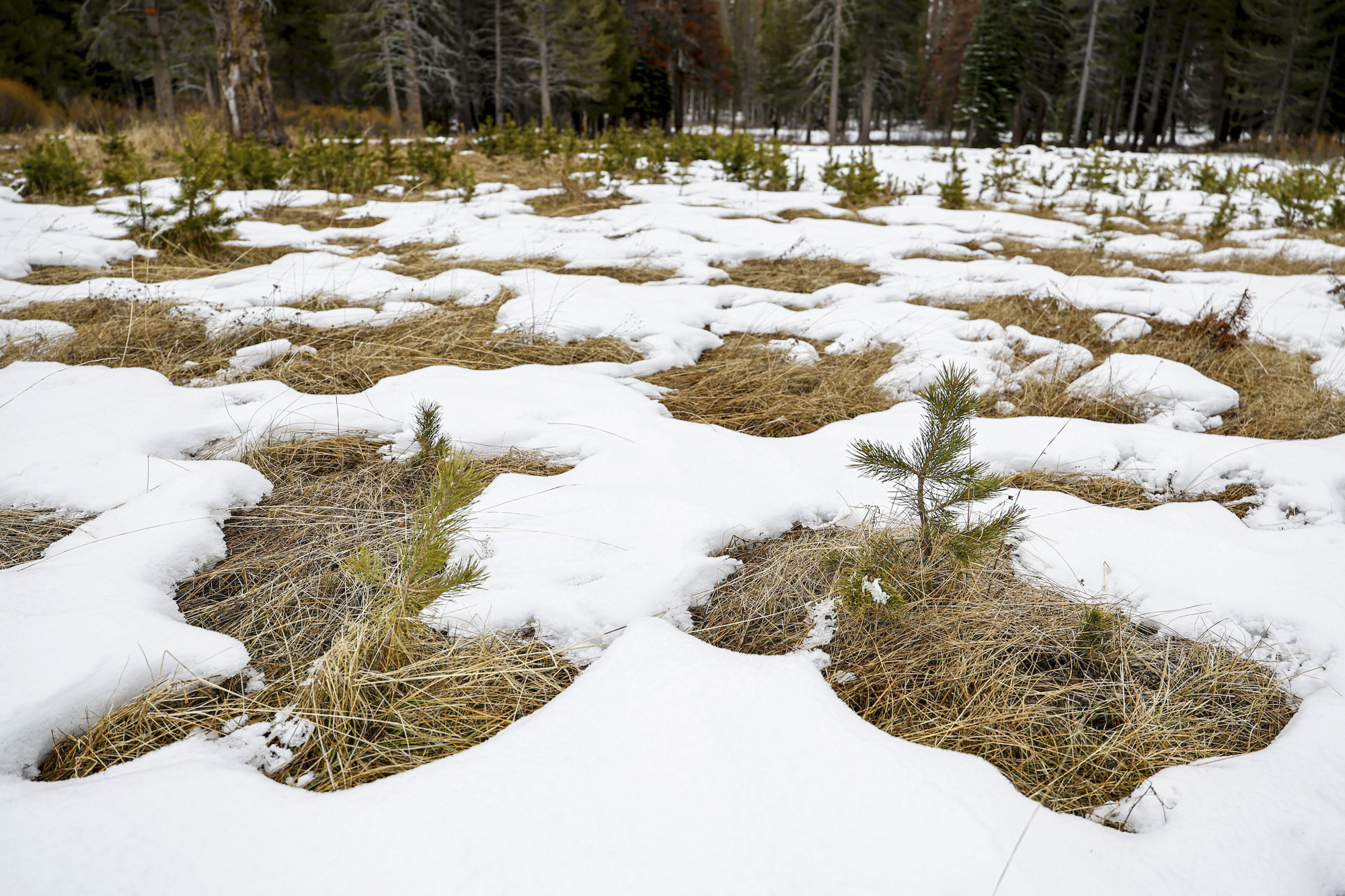Standing on a patch of snow near Lake Tahoe, Sean de Guzman, manager of the state’s Snow Surveys and Water Supply Forecasting section, pierced the snow with a metal tube to detect how much snow was on Tuesday’s ground. He then added the number to a statewide database of snow measurements.
The bad news? He found the snowpack across the entire Sierra Nevada is just one-quarter of normal. One year ago, he stood on about five feet of snow here when the snowpack was at 177% of normal.
“Today’s result shows that it’s really still too early to determine what kind of year we’ll have in terms of wet or dry,” de Guzman said. “Luckily, our statewide reservoirs are still well above average this time of year, thanks partly to how wet it was last year.”
The other good news is that meteorologists expect a winter storm to pile up more than a foot of snow on the Sierra Nevada tonight and tomorrow morning.
“A cold front is coming in, so the storm is gonna be a little bit colder and snow elevations lower,” de Guzman said. That’ll add snow to the pack.


